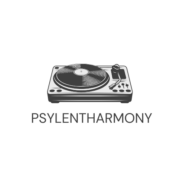I’ve always been fascinated by how pop music has evolved into a diverse tapestry of sounds and styles. From bubblegum pop to indie pop and everything in between pop music’s constant transformation keeps me on my toes as both a music lover and industry observer. The world of pop music isn’t just about what’s playing on mainstream radio. It’s a complex ecosystem of subgenres each with its own unique characteristics and cultural influences. As I’ve discovered through years of exploring these various styles there’s so much more to pop than catchy hooks and dance beats – though those are definitely part of its charm.
- Pop music encompasses various subgenres including mainstream pop, electropop, bedroom pop, alt-pop, K-pop, Latin pop, and pop-rap, each with distinct characteristics and production elements.
- Modern pop music typically features synthesized beats, electronic instrumentation, and polished production, with songs lasting 3-4 minutes and tempos ranging from 90-130 BPM.
- Dance pop and EDM influences have transformed pop production through digital sound design, featuring elements like side-chain compression, layered synths, and build-ups with BPM ranges of 118-130.
- Urban and R&B pop combines soulful vocals with modern beats (85-100 BPM), incorporating elements like trap-influenced hi-hats, 808 bass drums, and gospel-inspired harmonies.
- Alternative and indie pop emphasizes artistic expression through experimental approaches, featuring complex compositions, unconventional vocal techniques, and innovative production methods.
- Global pop trends, particularly K-pop and Latin pop, demonstrate the genre’s international evolution, combining regional influences with mainstream pop elements and significant market impact.
Pop Music Types
Modern pop music divides into distinct categories based on sonic elements musical structure production techniques.
Mainstream Pop Music Characteristics
Mainstream pop incorporates synthesized beats electronic instrumentation polished production. Typical songs follow a verse-chorus structure with:
- Melodic hooks repeated 3-4 times throughout the track
- Beat patterns ranging from 90-130 BPM
- Vocal processing featuring auto-tune pitch correction
- Multi-layered instrumental tracks with 8-12 elements
- Song durations averaging 3-4 minutes
| Element | Standard Range |
|---|---|
| Song Length | 3:00-4:00 min |
| Tempo | 90-130 BPM |
| Vocal Layers | 4-6 tracks |
| Hook Duration | 8-16 bars |
- Electropop: Integrates EDM elements digital synthesizers dance beats
- Bedroom Pop: Features lo-fi production intimate vocals minimal arrangements
- Alt-Pop: Combines alternative rock elements experimental production techniques
- K-Pop: Blends Korean lyrics choreography-focused performances Western pop elements
- Latin Pop: Incorporates Latin rhythms Spanish language reggaeton influences
- Pop-Rap: Merges hip-hop verses melodic choruses trap beats
| Sub-Genre | Key Production Elements | Typical BPM Range |
|---|---|---|
| Electropop | Synth-heavy | 120-130 |
| Bedroom Pop | Raw vocals | 70-90 |
| Alt-Pop | Guitar-based | 90-110 |
| K-Pop | Complex layers | 110-120 |
| Latin Pop | Percussion-focused | 95-105 |
| Pop-Rap | Bass-heavy | 85-95 |
Dance Pop and Electronic Influences
Dance pop merges electronic dance music elements with pop song structures creating infectious rhythms between 118-130 BPM. The genre emphasizes synthesized production, four-on-the-floor beats and memorable vocal hooks.
EDM-Pop Fusion
Electronic dance music transformed pop production through digital sound design techniques like side-chain compression, layered synths and progressive builds. Notable EDM-pop crossover tracks include:
| Artist | Song | Year | Peak Chart Position |
|---|---|---|---|
| Lady Gaga | “”Just Dance”” | 2008 | #1 Billboard Hot 100 |
| Calvin Harris & Rihanna | “”We Found Love”” | 2011 | #1 Billboard Hot 100 |
| The Chainsmokers | “”Closer”” | 2016 | #1 Billboard Hot 100 |
Key production elements in EDM-pop include:
- Filtered bass drops with heavy compression
- Stacked vocal chops and pitch-shifted samples
- Build-ups using white noise sweeps
- Four-bar loop structures with rhythmic variation
Synth Pop Evolution
Synth pop’s electronic textures shaped modern dance pop through iconic sounds like:
- Analog synthesizer patches (Moog, Roland Jupiter-8)
- Drum machine programming (Roland TR-808, LinnDrum)
- Arpeggiator sequences
- Vocoder effects on vocals
Contemporary synth pop production incorporates:
- Virtual analog synthesis
- Wavetable and FM synthesis techniques
- Hardware emulation plugins
- Hybrid acoustic-electronic arrangements
- Automated filter sweeps
- Modulation effects chains
- Multi-layered sound design
- Dynamic processing
Urban and R&B Pop
Urban and R&B pop combines elements of rhythm & blues with contemporary pop production techniques. This fusion creates a distinct sound characterized by soulful vocals layered over modern beats between 85-100 BPM.
Hip Hop Pop Crossovers
Hip hop pop crossovers emerged in the late 1990s through collaborations between pop artists and rap producers. These tracks feature:
- Trap-influenced hi-hats programmed in 32nd note patterns
- 808 bass drums mixed with pop synthesizers
- Radio-friendly song structures with rap verses
- Melodic hooks performed by pop vocalists
Notable examples include Post Malone’s “”Circles”” (808s with pop melodies) Doja Cat’s “”Say So”” (disco pop with rap elements) The Kid LAROI’s “”Stay”” (emo rap meets pop production).
Soul Pop Variations
Soul pop variations incorporate classic R&B elements into modern pop arrangements:
- Gospel-inspired vocal harmonies in 3-4 part structures
- Live instruments mixed with programmed beats
- Jazz-influenced chord progressions using seventh chords
- Analog warmth through tape saturation effects
Current artists defining this style include:
| Artist | Key Production Element | BPM Range |
|---|---|---|
| The Weeknd | Retro synths | 90-105 |
| SZA | Neo-soul guitars | 85-95 |
| H.E.R. | Live instrumentation | 75-90 |
The production combines vintage recording techniques (tube compression analog EQ) with modern digital processing (Auto-Tune vocal layering).
Alternative and Indie Pop
Alternative and indie pop emerged as a reaction to mainstream pop conventions, emphasizing artistic expression over commercial success. These genres blend pop’s melodic sensibility with experimental approaches to songwriting and production.
Art Pop Movement
Art pop elevates conventional pop structures through avant-garde elements and complex compositional techniques. Kate Bush pioneered this movement in the 1970s with multi-layered productions and theatrical performances. Key characteristics include:
- Orchestral arrangements mixed with electronic elements
- Complex song structures beyond verse-chorus format
- Literary or conceptual themes in lyrics
- Unconventional vocal techniques
- Visual art integration in performances
Notable art pop productions:
| Artist | Album | Year | Innovation |
|---|---|---|---|
| Björk | Homogenic | 1997 | Electronic-orchestral fusion |
| St. Vincent | Strange Mercy | 2011 | Digital distortion techniques |
| FKA twigs | LP1 | 2014 | Deconstructed vocal processing |
Experimental Pop Styles
Experimental pop pushes boundaries through unconventional production methods and song structures. Current artists incorporate:
- Micro-tonal harmonies
- Found sounds and field recordings
- Glitch effects and digital manipulation
- Non-traditional time signatures
- Minimalist compositions
Production techniques include:
- Granular synthesis for texture creation
- Modular synthesizer patches
- Algorithmic composition tools
- Binaural recording methods
- Field recording integration
| Technique | Application | Effect |
|---|---|---|
| Sound design | Synthetic textures | Hyper-realistic timbres |
| Digital processing | Extreme pitch shifting | Voice manipulation |
| Spatial audio | 3D sound placement | Immersive soundscapes |
Global Pop Music Trends
Global pop music trends showcase distinct regional influences merging with mainstream pop elements, creating unique hybrid genres that dominate international charts. These trends reflect cultural exchanges in an interconnected music industry.
K-Pop Phenomenon
K-pop dominates global music charts with its signature blend of catchy melodies, synchronized choreography, high-production values. The genre generates $5.7 billion annually for South Korea’s economy through multimedia content, merchandise sales, and concert tours. Notable characteristics include:
- Production elements: Complex vocal harmonies, electronic beats, rap segments
- Visual aesthetics: Coordinated fashion, intricate dance routines, cinematic music videos
- Marketing strategies: Social media engagement, fanbase cultivation, multi-platform content
- Cultural impact: Korean language learning surges, fashion trends, global brand partnerships
| K-Pop Statistics | Value |
|---|---|
| Global Fans (2023) | 500+ million |
| Average MV Budget | $300,000 |
| Annual Revenue | $5.7 billion |
| Streaming Numbers | 8+ billion monthly |
- Musical elements: Dembow rhythm, urban beats, tropical percussion
- Production style: Digital instrumentation, AutoTune effects, dynamic bass lines
- Language approach: Code-switching lyrics, bilingual collaborations
- Distribution channels: Streaming platforms, social media, cross-market radio play
| Latin Pop Metrics | Value |
|---|---|
| Market Share (US) | 5.8% |
| Growth Rate (YoY) | 35% |
| Streaming Share | 22% |
| Billboard Hot 100 Entries | 45+ songs (2023) |
Pop music’s incredible diversity and constant evolution never cease to amaze me. From mainstream hits to experimental compositions the genre continues to push boundaries and redefine itself. I’ve seen how digital technology and global influences have transformed pop music into an expansive universe of sounds styles and creative expressions.
As we look at pop music today it’s clear that innovation knows no bounds. Whether it’s K-Pop’s worldwide dominance EDM’s infectious beats or indie pop’s artistic approach each subgenre adds its unique flavor to the mix. I’m excited to see how pop music will continue to evolve and shape our cultural landscape in the years to come.

